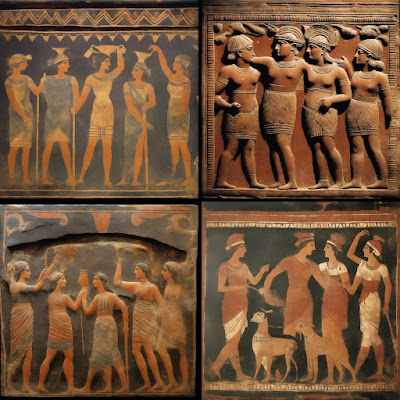Etruscan art
 |
| Etruscan art |
Etruscan art refers to the artistic and cultural production of the ancient Etruscan civilization, which thrived in what is now modern-day Italy, primarily between the 8th and 3rd centuries BCE. Etruscan art is known for its distinctive style, which was influenced by neighboring civilizations like the Greeks and the Romans but also had its unique characteristics.
Some key features of Etruscan art include:
Tomb Paintings: Many of the most well-preserved examples of Etruscan art are found in tomb paintings. These often depicted scenes from daily life, mythology, and religious rituals.
Sculpture: Etruscan sculptures often portrayed figures in a more naturalistic and lively manner compared to some of their contemporaries. They created sculptures in bronze, terracotta, and stone.
Ceramics: Etruscans were skilled in pottery and produced intricate ceramic pieces, including vases, bowls, and other vessels.
Jewelry: Etruscan jewelry is renowned for its craftsmanship. They used gold, silver, and precious stones to create intricate designs.
Architecture: Etruscan architecture included temples, city walls, and tombs. They were known for their use of arches and some innovative construction techniques.
Funerary Art: Much of what we know about the Etruscans comes from their funerary art. Elaborate tombs and burial sites have provided valuable insights into their culture and beliefs.
Etruscan art played a significant role in influencing Roman art and, consequently, Western art. While much of their civilization's history remains a mystery, their artistic legacy continues to be studied and admired today.
Comments
Post a Comment